Addressing South Sudan’s Most Pressing Health Challenges Through Research and Community-Centered Solutions
South Sudan faces a complex health crisis, from infectious diseases and maternal mortality to malnutrition and mental health challenges.
HEALTH RESEARCH


At Health Action in South Sudan (HASS), we are committed to improving the health and well-being of communities across the nation. South Sudan faces incessant health challenges, exacerbated by years of conflict, limited infrastructure, and environmental vulnerabilities.
To address these issues, we plan conduct researches tailored to the unique environment, culture, and social cohesion of the people of South Sudan.
The Most Pressing Health Issues in South Sudan
South Sudan’s health landscape is marred by burdensome disparities between urban and rural areas. Urban centers like Juba City face lack of clean water, poor sanitation, and a growing burden of non-communicable diseases, while rural areas grapple with limited healthcare access, infectious diseases, and malnutrition.
Below are the most critical health issues:
1. Infectious Diseases
Malaria, tuberculosis (TB), and HIV/AIDS remain leading causes of morbidity and mortality. Malaria accounts for 45% of outpatient visits and 30% of hospital admissions (WHO, 2022). TB affects an estimated 15,000 people annually (WHO, 2021), while HIV/AIDS co-infection with TB prevalence is 2.5%, with higher rates in urban areas (UNAIDS, 2023).
2. Maternal and Child Health
South Sudan has one of the highest maternal and child mortality rates globally. The maternal mortality ratio is 1,150 deaths per 100,000 live births, and the under-five mortality rate is 96 deaths per 1,000 live births (UNICEF, 2023). Poor maternal, antenatal care and malnutrition drive these alarming figures.
3. Malnutrition and Food Insecurity
Over 60% of the population faces acute food insecurity, and 31% of children under five suffer from chronic malnutrition (WFP, 2023). Malnutrition weakens immunity, increasing susceptibility to diseases such as malaria and tuberculosis.
4. Water, Sanitation, and Hygiene (WASH)
Only 41% of the population has access to clean water, and 11% have access to basic sanitation (WHO/UNICEF, 2023).
Oxfam reports that only 55% of people in Juba have access to safe drinking water (n.d.). Poor WASH conditions contribute to waterborne diseases like cholera and diarrhea.
5. Mental Health and Psychosocial Support
Years of conflict have left over 40% of South Sudanese with symptoms of PTSD, yet there are fewer than 5 psychiatrists serving the entire country (WHO, 2022). Stigma and lack of services further exacerbate the crisis.
6. Non-Communicable Diseases (NCDs)
Urban areas are witnessing a rise in NCDs like hypertension and diabetes. Preliminary data suggests 10-15% of adults in urban centers may have hypertension (Ministry of Health, South Sudan, 2021).
The Need for Tailored Research
A one-size-fits-all approach is insufficient. South Sudan’s diverse environments—from arid regions to flood-prone areas—require context-specific solutions. Our researches will also consider the social fabric shaped by decades of conflict and cultural practices.
At HASS, we would like to carry out research that:
Engages Communities: Ensures solutions are culturally appropriate and sustainable.
Focuses on Environmental Adaptability: Addresses challenges like flooding and drought.
Builds Local Capacity: Empowers local researchers and healthcare workers.
Our Commitment to Health Research and Action
HASS is dedicated to bridging the gap between research and action. By collaborating with local communities, government agencies, and international partners, we aim to:
Conduct studies identifying root causes of health inequities.
Develop evidence-based, tailored interventions.
Advocate for policies prioritizing health equity and access to care.
Join Us in Making a Difference
The health challenges facing South Sudan are immense but not insurmountable. With your support, we can design effective, sustainable solutions.
Together, we can build a healthier future for South Sudan—one where every individual has access to the care they need.
References
Ministry of Health, South Sudan. (2021). Non-communicable diseases in South Sudan: A preliminary assessment. Juba: MOH.
Oxfam. (n.d.). Clean water runs dry in Juba, South Sudan. Oxfam. Retrieved February 11, 2025, from https://www.oxfam.org/en/clean-water-runs-dry-juba-south-sudan?utm_source=chatgpt.com
UNAIDS. (2023). HIV and AIDS estimates: South Sudan. Retrieved from https://www.unaids.org
UNICEF. (2023). South Sudan: Maternal and child health statistics. Retrieved from https://www.unicef.org
World Food Programme [WFP]. (2023). South Sudan food security and nutrition overview. Retrieved from https://www.wfp.org
World Health Organization [WHO]. (2021). Tuberculosis country profile: South Sudan. Retrieved from https://www.who.int
World Health Organization [WHO]. (2022). Malaria in South Sudan: Key facts and figures. Retrieved from https://www.who.int
World Health Organization [WHO]. (2022). Mental health in South Sudan: Addressing the invisible crisis. Retrieved from https://www.who.int
WHO/UNICEF. (2023). Joint Monitoring Programme for Water Supply, Sanitation and Hygiene (JMP): South Sudan. Retrieved from https://washdata.org
Transforming healthcare for a healthier South Sudan.
Health Action in South Sudan |© 2025. All Rights Reserved


HASS Programs
Developed by OptaBulk
